Considering going vegan [1]? There's no better time to try the plant-based approach to eating than the start of a new year. That's not just because it makes an appropriate New Year's resolution, but also because of Veganuary [2] — the trend of going vegan for January initiated by a non-profit organisation of the same name [3]. But what exactly is it, and how can you have the best chance of succeeding at making the transition?
Ahead, discover what Veganuary is and our top tips on joining in on the initiative in 2021, as well as some basic information on what you can and can't eat on a vegan diet, how to get your daily nutrients, and how to avoid common pitfalls. We've also rounded up some delicious vegan recipes [4] to show you how to convert your favourites into vegan versions — from bolognese, chili, and curry to tacos, stew, risotto, and ramen. There's also a comprehensive list of UK chain restaurants, cafes, coffee shops, and pubs where you'll find vegan offerings aplenty.
What Is Veganuary?
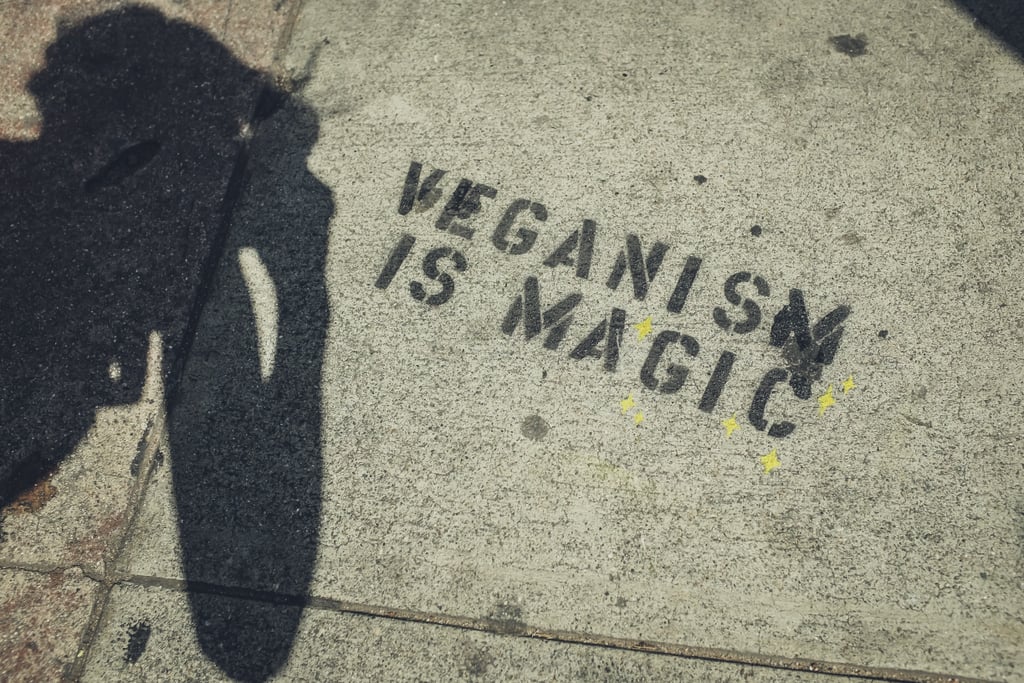
Veganuary is a mashup of the words vegan and January, and simply means trying out the vegan approach to life through the first month of the year. The idea was started by a non-profit organisation of the same name. Throughout the year, the UK-registered charity works with businesses around the country to increase vegan food provision in restaurants and shops, with 200 new vegan menus and products launching during Veganuary in 2019, and even more on the way for January 2020. The Veganuary website [5] also offers heaps of information about changing to a vegan diet, including the health [6], environmental, animal welfare, and financial benefits.
According to the company, more than half a million people in 178 countries have signed up to Veganuary since its inception in 2014.
What You Can and Can't Eat on a Vegan Diet
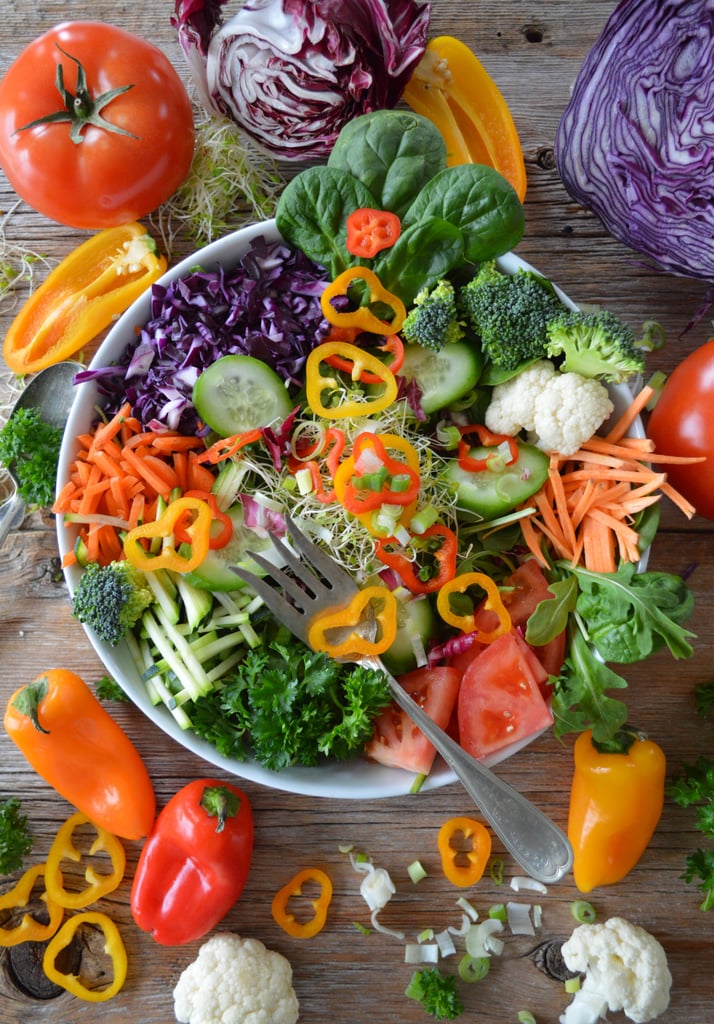
You can't eat anything that comes from an animal on a vegan diet, but that leaves plenty of plant-based options [7].
What you can eat:
- Vegetables: all veggies are fair game.
- Fruit: all fruits are available to you.
- Grains: bread, pasta, rice, quinoa, amaranth, buckwheat, etc.
- Legumes: chickpeas, lentils, beans, peanuts, peas, soy, etc.
- Nuts: almonds, brazils, cashews, pistachios, walnuts, etc.
- Seeds: chia, pumpkin, sesame, sunflower, etc.
- Oils: olive oil, coconut oil, avocado oil, etc.
- Meat substitutes: Quorn, tofu, tempeh, etc.
What you can't eat:
- Meat
- Fish
- Dairy: butter, cheese, cow's milk, ice cream, yoghurt, etc.
- Eggs
- Sauces and broths made using bones, etc.
- Honey
- Foods containing gelatine: jelly, sweets, marshmallows etc.
There are lots of vegan alternatives to your favourites, like vegan ice cream, vegan sweets, and so on, that use vegan replacements for ingredients like cow's milk and gelatine. Swot up on how to become an expert label speed reader [8] to give you confidence when choosing what to put in your shopping basket.
How to Get Your Daily Nutrients
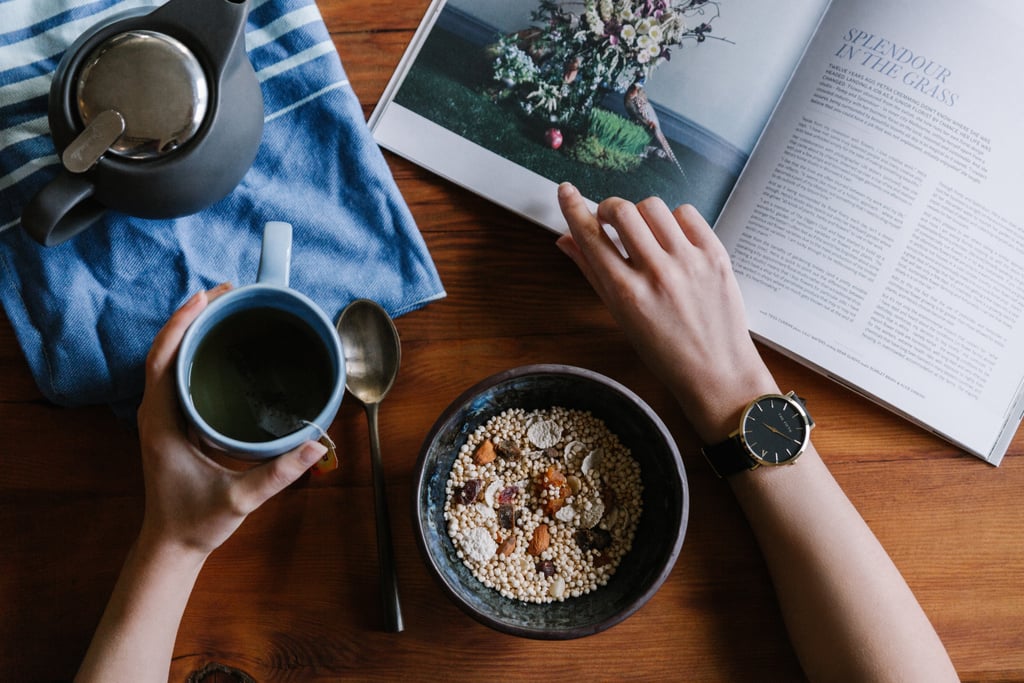
Replacing what you remove is key for a successful transition to vegan eating. Use tips ahead as a guide, but it's also important to talk to your GP or a registered dietitian before starting a vegan diet to find out how to continue to get all the vitamins and nutrients you need.
Protein
Protein helps maintain and build strength, and is an important part of cell repair. A lot of protein is animal based, but there are lots of plant-based sources, too — including legumes, nuts, and whole grains.
Calcium
According to the NHS, adults need 700mg of calcium daily [9] to keep our bones and teeth strong. Vegan sources of calcium include broccoli, kale, watercress, soy yoghurt, fortified plant milks, and calcium-set tofu.
Iron
We need iron to produce red blood cells [10]. Instead of red meat, you can get iron from pulses, breakfast cereals fortified with iron, dark green, leafy vegetables, nuts, dried fruit, and wholemeal bread and flour.
Omega-3 Fatty Acids
Found in oily fish, omega-3 fatty acids are unsaturated fats that help you maintain a healthy heart [11]. Vegan sources include walnuts, oils like flaxseed, linseed, rapeseed, and soya, and soya-based foods like tofu.
Vitamin B12
Vitamin B12 is involved "making red blood cells," according to the NHS website, and is essential for maintaining a healthy nervous system [12]. As it's only found naturally in food from animal sources, it's difficult for vegans to get enough, so you might want to consider supplementation (make sure to speak to your doctor before starting one, though). Vegan sources include breakfast cereals and unsweetened soya drinks fortified with B12, and yeast extract, like Marmite.
Supplements
If you're concerned that you're not getting enough of the recommended daily intake of vitamins and minerals through your diet alone (whether you're vegan or not), you can also take vegan-approved supplements. However — and we've said this a couple times already but it bears repeating — before starting (or changing) any supplement routine, you need to consult a registered dietitian or your GP. This not only ensures you're taking the correct supplements for your specific diet and health issues, but it also helps you avoid the risk of using supplements that don't react well when taken together.
Pitfalls and Common Mistakes
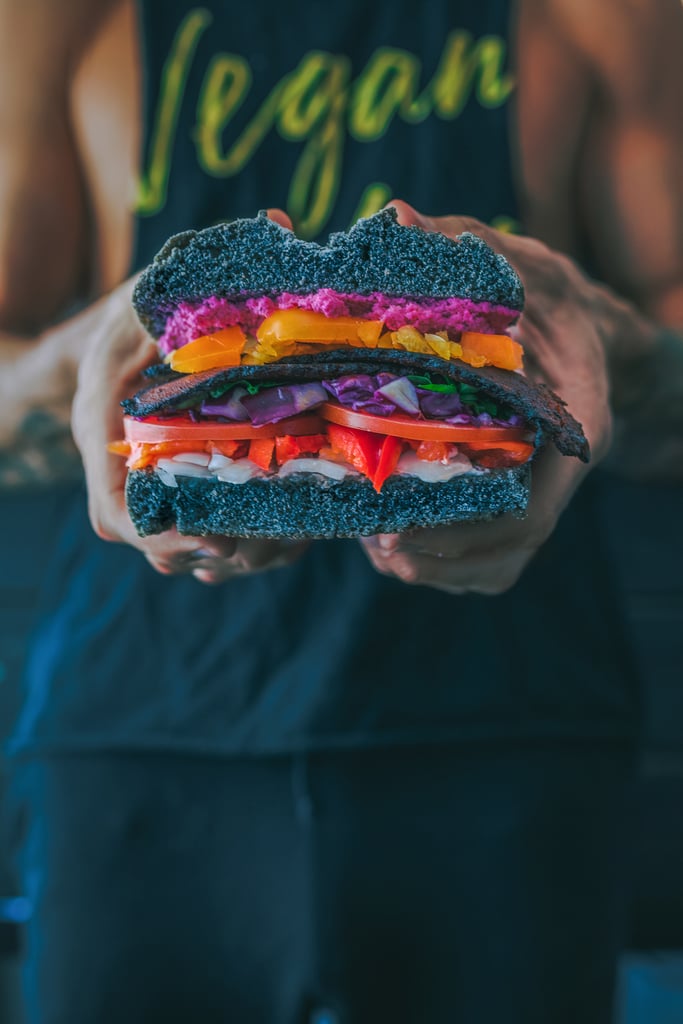
There are certain ingredients that obviously come from animals and are easy to identify and avoid. But there are also lots of foods that it's easy to forget contain animal products. Keep these common pitfalls in mind when going vegan:
- Cakes and biscuits: these typically contain butter and/or eggs.
- Sweets: lots use gelatine (which is made from pigs) as a setting agent.
- Honey: bees make honey, so to fully avoid any food to do with animals, you need to drop honey, too.
- Leather and fur: although not something you'd eat, if you want to fully embrace the vegan approach to life, you also won't wear or buy anything made from fur and leather, from shoes and jackets to key rings and bags.
Eating Out
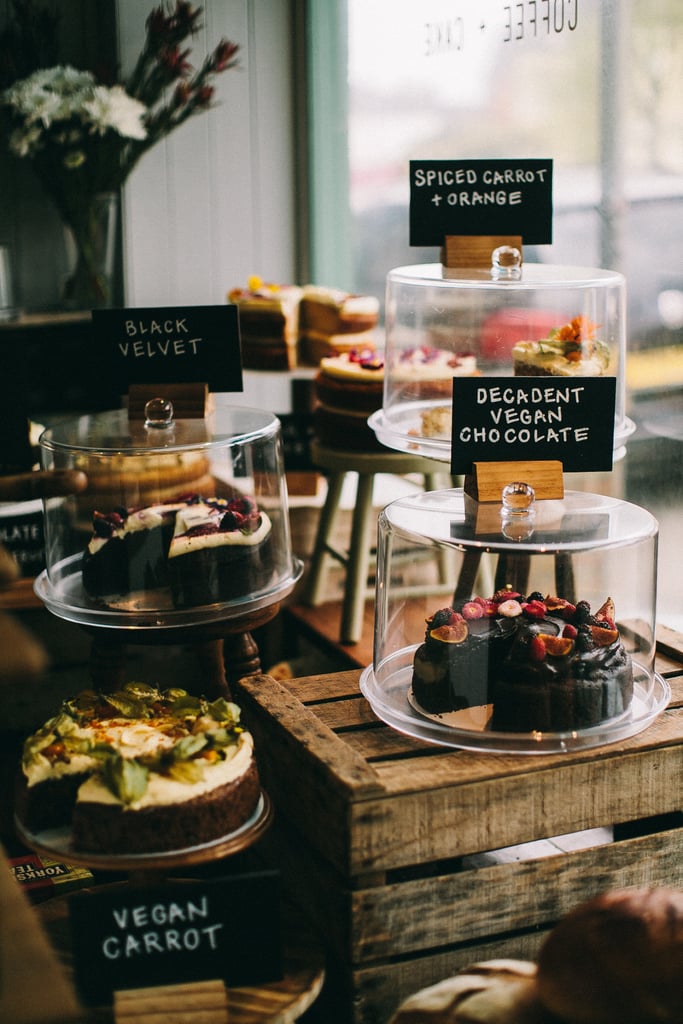
Lots of UK chain restaurants, cafes, and coffee shops have a good range of vegan options. These include:
Italian:
- Ask Italian
- Basilico
- Bella Italia
- Carluccio's
- Domino's Pizza
- Papa John's
- Pizza Express
- Pizza Hut
- Prezzo
- Strada
- Zizzi
Coffee shops, cafes, fast food, and pubs:
- All Bar One
- Burger King
- Caffe Nero
- Costa
- Greggs
- Harvester
- KFC
- McDonald's
- Pret a Manger
- Slug & Lettuce
- Starbucks
- Subway
- Yates's
World Food
- Byron Burger
- Cafe Rouge
- Chiquito
- Frankie & Bennys
- Giraffe
- Handmade Burger Co.
- Itsu
- Las Iguanas
- Nando's
- TGI Fridays
- The Real Greek
- Wagamama
- Wasabi Sushi & Bento
- Yo! Sushi
If you prefer to cook at home, keep reading for some great vegan recipes to get you started.
Vegan Chili
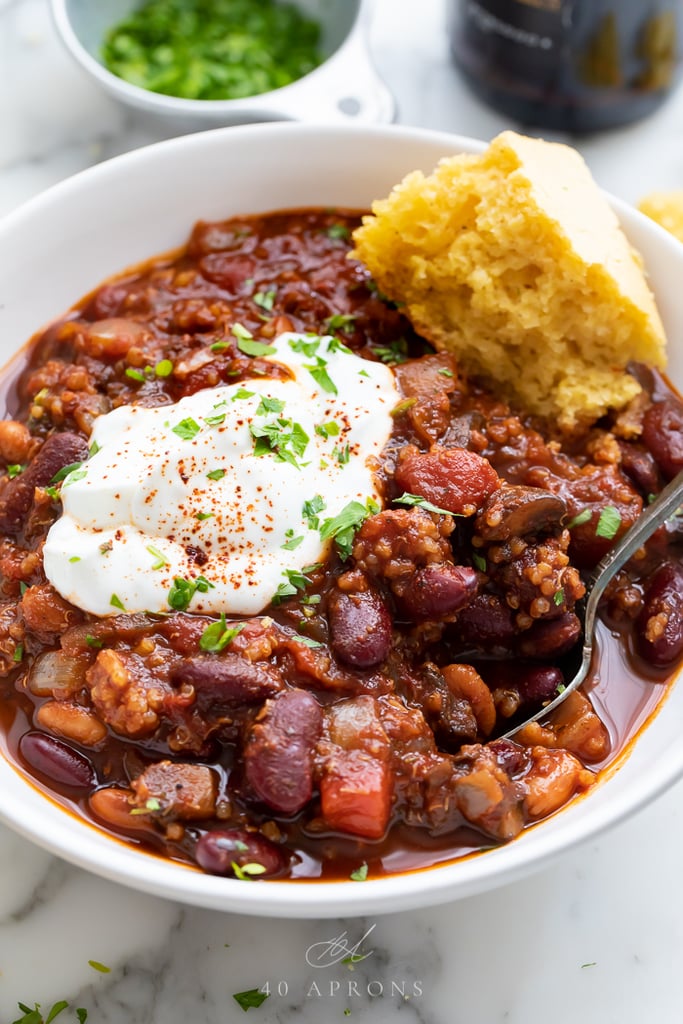
This filling chili is packed with beans, dark beer, tomatoes, chipotle peppers, and quinoa.
Get the recipe: vegan chili [13]
Creamy Vegan Chickpea Curry
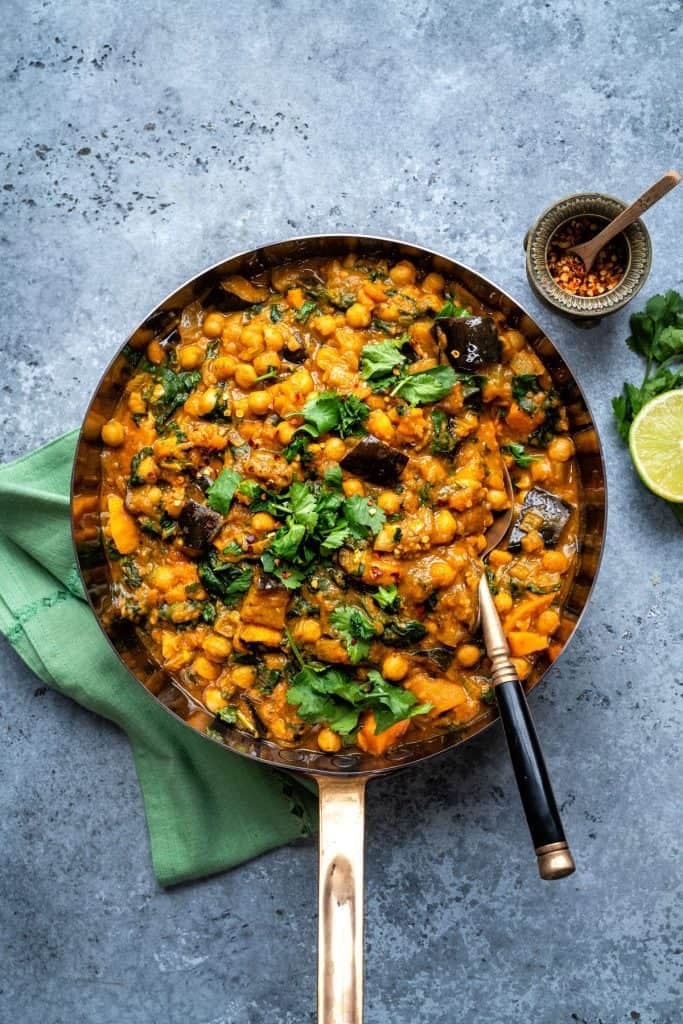
Chickpeas are a vegan staple, and they're full of flavour when made into a curry. This one's gluten-free, too.
Get the recipe: creamy vegan chickpea curry [14]
Creamy Vegan Risotto With Asparagus and Quinoa
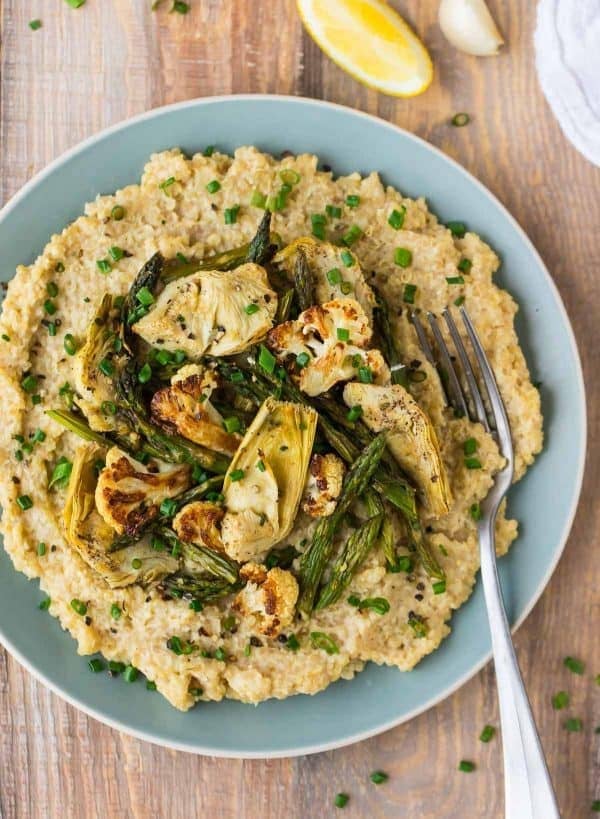
You can still make risotto when you're vegan — it involves using almond milk and nutritional yeast for creaminess and flavour.
Get the recipe: creamy vegan risotto with asparagus and quinoa [15]
Vegan Chipotle-Roasted Butternut Squash Tacos
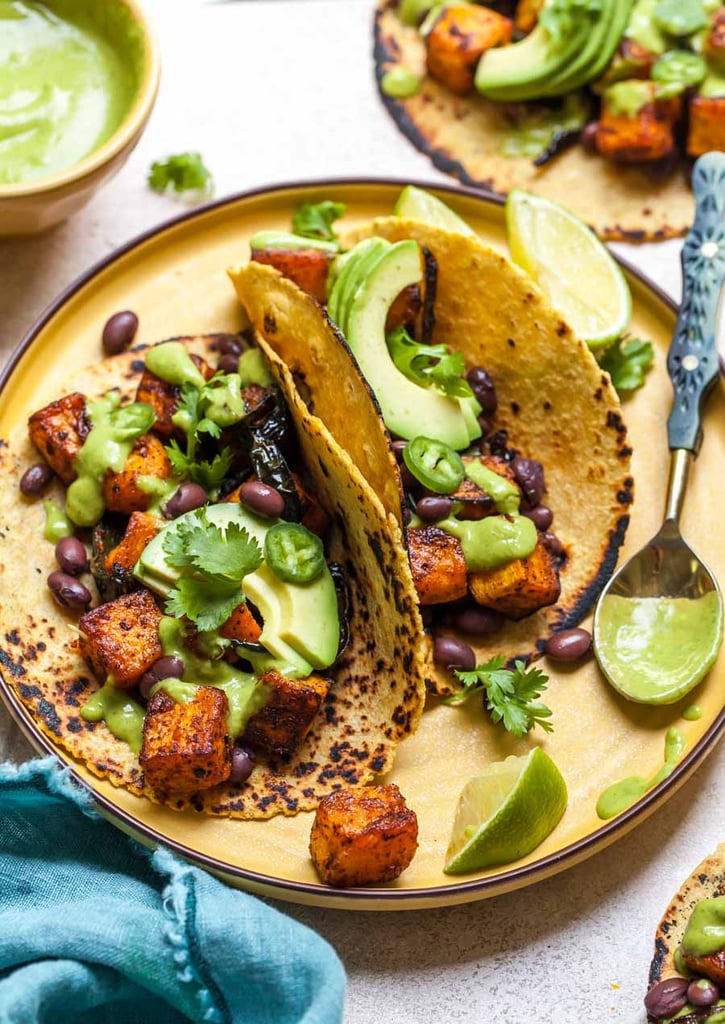
Tacos topped with black beans, peppers, avocado sauce, and tasty butternut squash are gluten-free as well as vegan.
Get the recipe: vegan chipotle-roasted butternut squash tacos [16]
Easy Vegan Burrito Bowls

There are so many options for vegan burrito bowls. These include cauliflower walnut taco meat, blistered pepper strips, rice, and black beans, with a range of toppings, from lime to hot sauce.
Get the recipe: easy vegan burrito bowls [17]
Vegan One-Pot Curried Lentil Soup
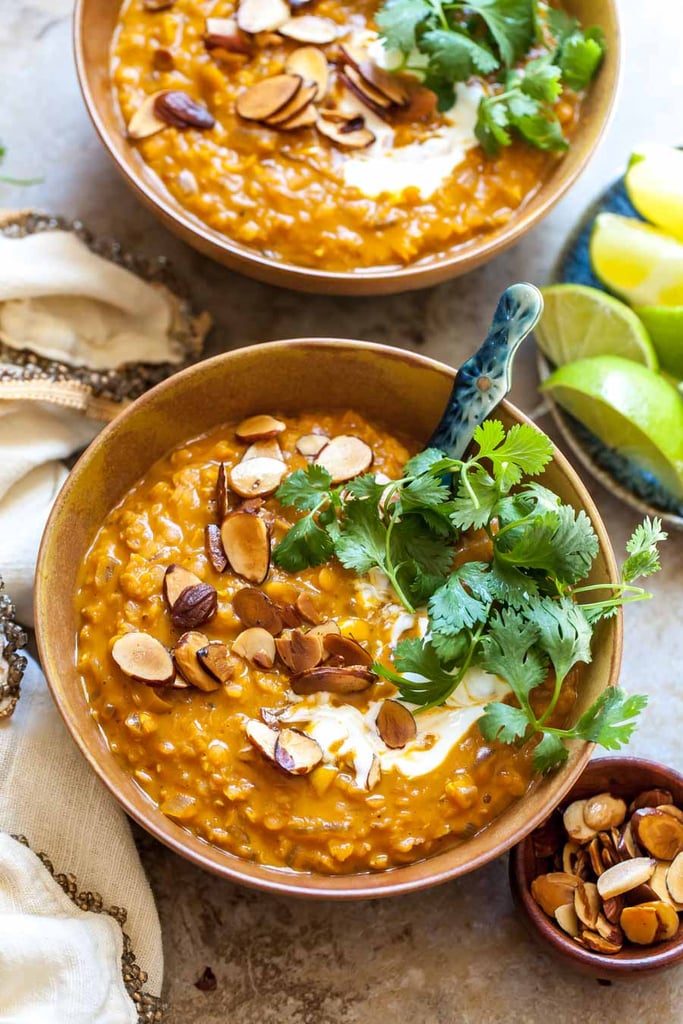
Garam masala almonds bring a punch of texture to this hearty, gluten-free soup.
Get the recipe: vegan one-pot curried lentil soup [18]
Vegan Cauliflower Gnocchi With Kale-Cashew Pesto
This gnocchi takes just 10 minutes, and has an appealing crispy texture.
Get the recipe: vegan cauliflower gnocchi with kale-cashew pesto [19]
Crockpot Spiced Chickpea Stew
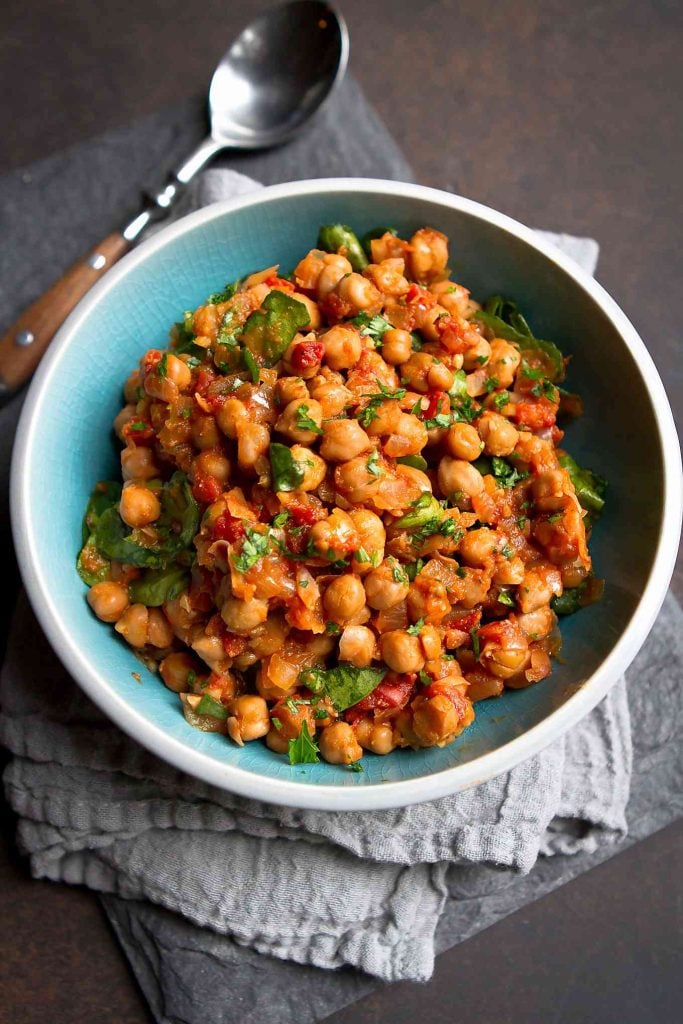
Another handy chickpea recipe, they're spiced with coriander and ginger and then the dish finished is with fresh spinach.
Get the recipe: crockpot spiced chickpea stew [20]
Vegan One-Pot Ginger-Scallion Ramen Noodles
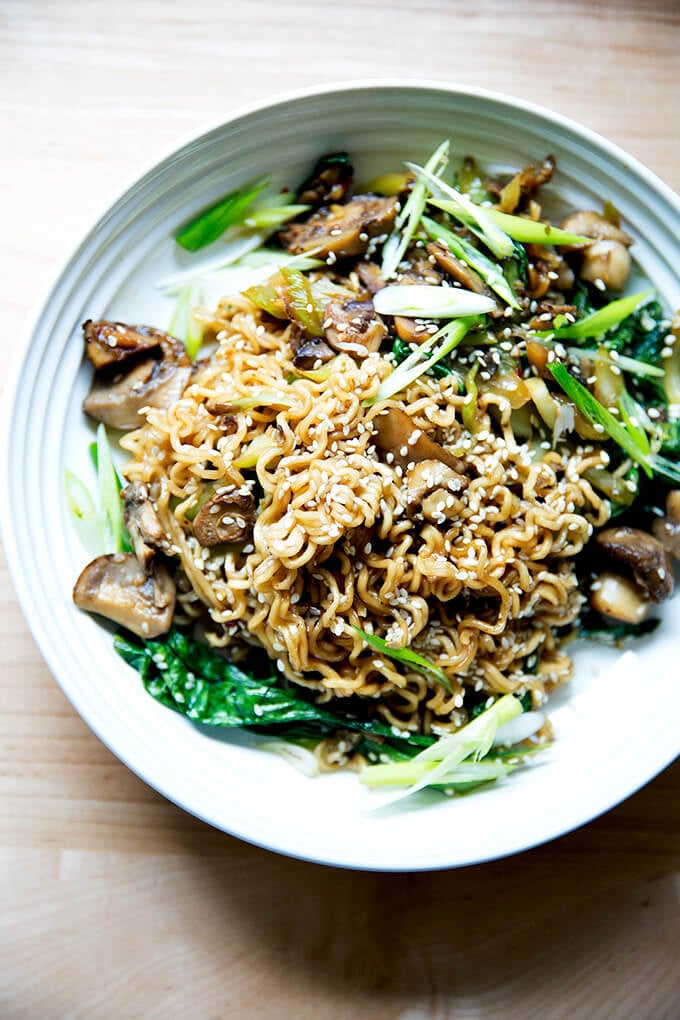
Cabbage, mushrooms, and soy sauce combine in this easy, vegan takeaway alternative.
Get the recipe: vegan one-pot ginger-scallion ramen noodles [21]
Vegan Bolognese
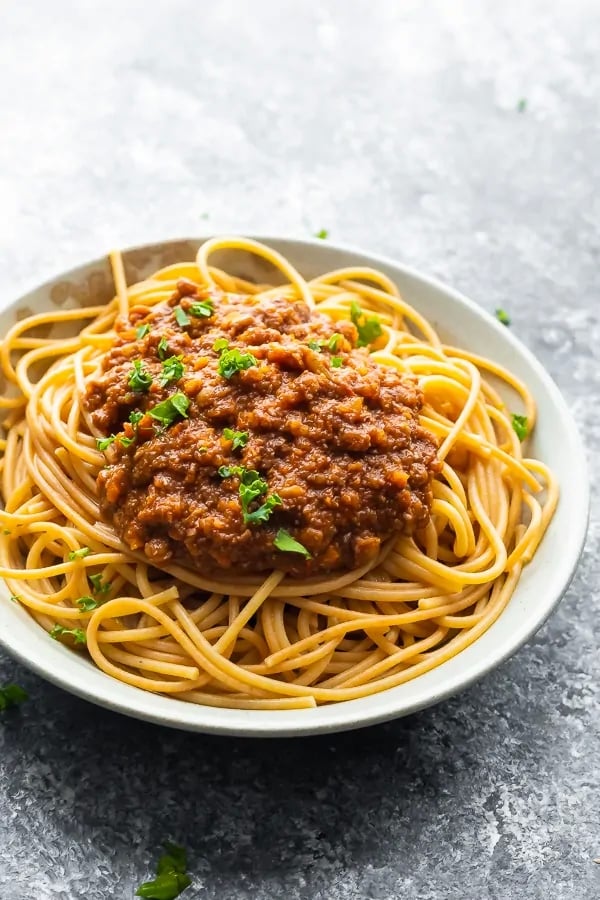
Lentils, mushrooms, walnuts, and vegetables makes this meat-free dish hearty and rich.
Get the recipe: vegan bolognese [22]